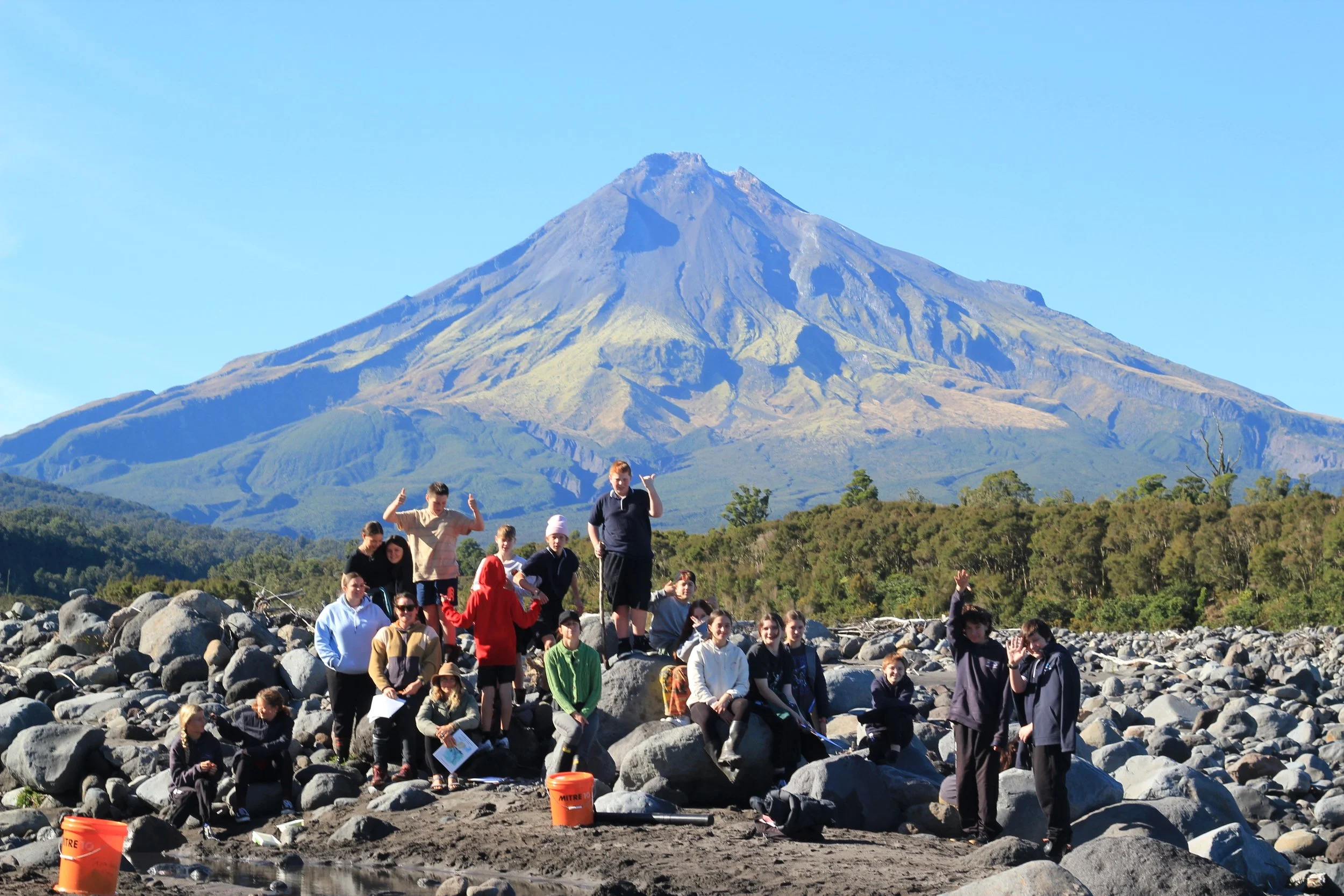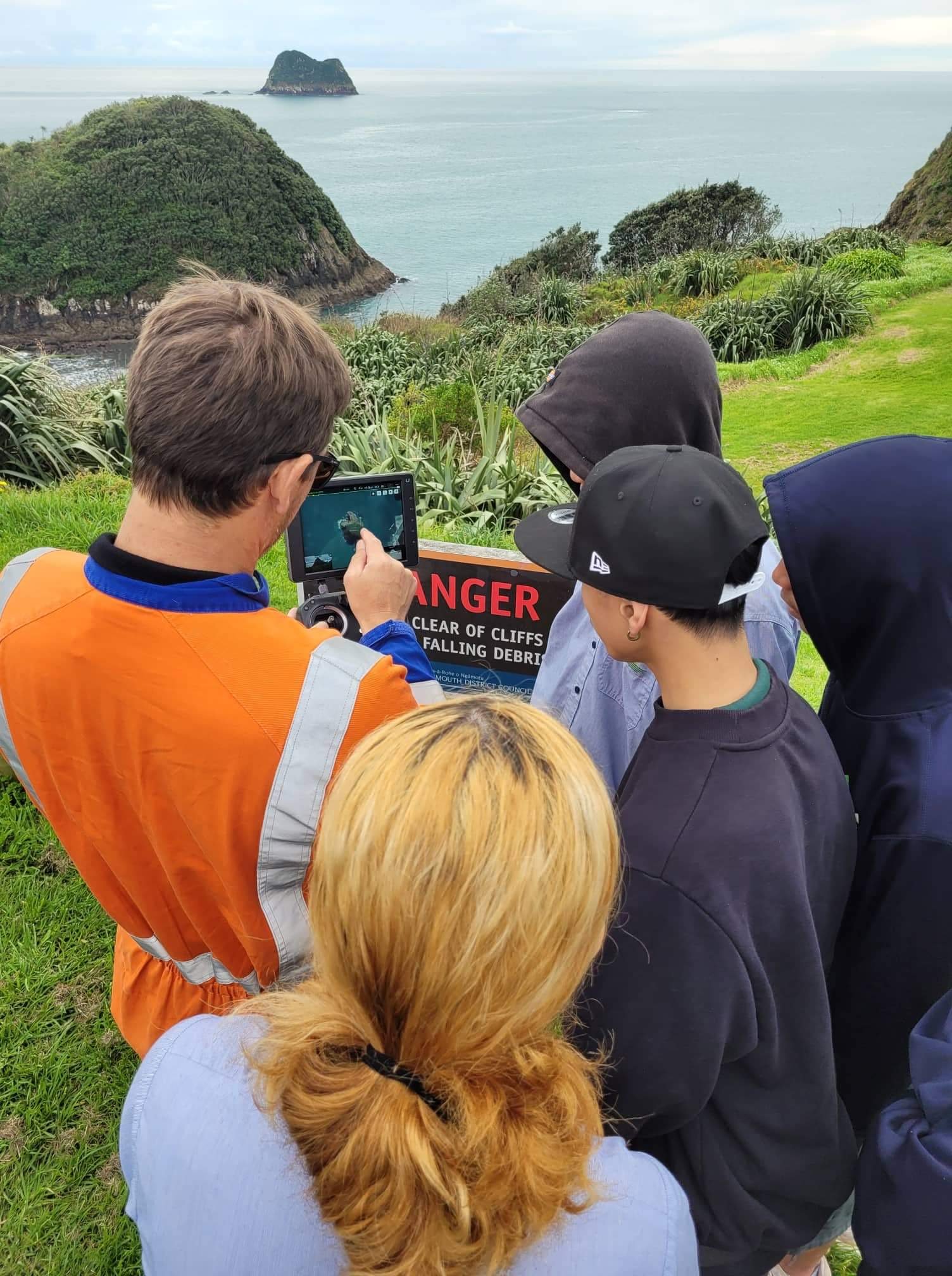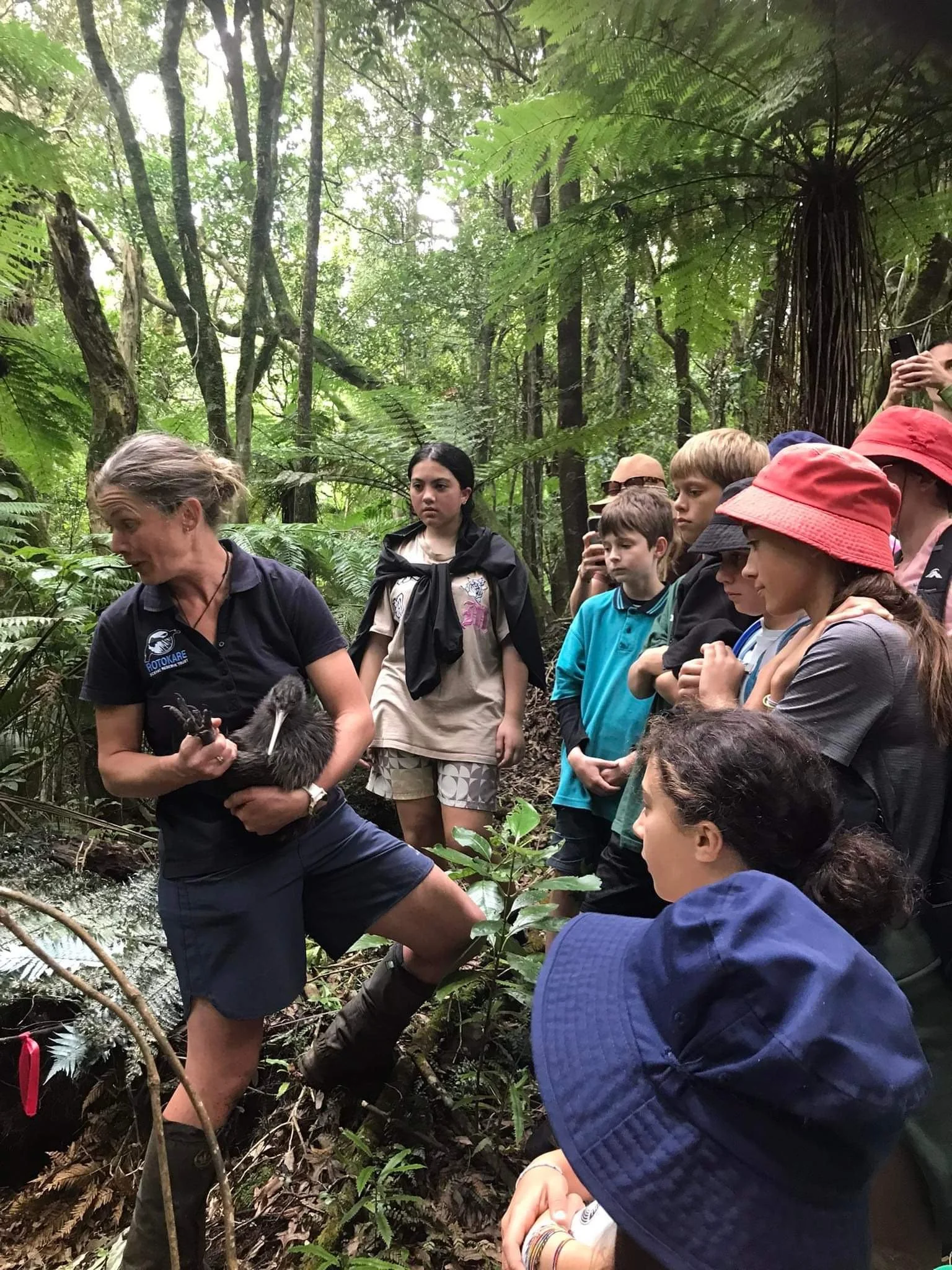Te Ara Taiao collaboration and connection to whenua
Awa monitoring with Coastal Taranaki School year nine science class at Hangataahua awa.
Korihi mai te manu, tākiri mai te ata, ka ao, ka ao, ka awatea! The birds at dawn reconnect us to our natural world and a sense of hope.
Similarly, the Te Ara Taiao programme looks to the future by collaborating with schools, environmental leaders, hapū and iwi to empower young leaders in the Taiao. “It’s about learning to connect to nature in its many forms. The programme focuses on supporting student leaders, teacher development, and being part of a community of kaimahi working together,” says Tane Manukonga, Kaiwhakahaere/Regional Manager of Te Ara Taiao.
We enhance our collective mana and well-being by engaging our senses, appreciating, and then caring for the Taiao. Integral to the programme is relationship with local hapū, and opportunities for sharing mātauranga Māori. '“Relationships with hapū and iwi have strengthened. The sharing of local narratives – this has been a real privilege and will support our staff in the implementation of the NZ Histories Curriculum,” said Natasha Jackson, Principal Ōakura School.
Te Pi’ipi’inga Kakano Mai i Rangiatea and TMP manu moana project. Photo, Tane Manukonga.
Kiwi release in Kaitake Ranges, Te Papakura o Taranaki. Photo, Tane Manukonga.
Schools have been part of local projects, like releasing and monitoring kiwi to new homes within Te Papa Kura o Taranaki (Egmont National Park), or a Manu Moana project using drone technology to monitor seabird habitats on the islands surrounding Back Beach. After a kiwi release this month in the Kaitake Ranges, some of the Te Ara Taiao leaders wished they could share it with their whānau, “The feeling that it gives you when you see kiwi, you can't explain it.”
The team of Kairuruku/Education Coordinators plans mahi with a shared maramataka, focusing on biodiversity, forest habitat, freshwater, marine, and garden projects. Students are supported to lead projects, and exposed to experts like those working at Rotokare Scenic Reserve Trust, Taranaki Kiwi Trust, DOC, Taranaki Regional Council, Wildlife Ai, and other community partners.
In 2022 Student leadership groups designed collaborative projects including community Puanga celebrations, awa restoration projects, and advocated for the protection of taonga species. In schools or community gardens, students learn how to grow Kumara as well as traditional practices around growing tipu and harvesting.
Kaiako (teachers) from participating schools has attended a number of professional development days, and community partners help provide opportunities for the students while benefitting from tuakana-teina learning exchanges. “I have gained invaluable personal connections with Tangata Whenua and learned about the history, current challenges, and opportunities for Taranaki,” said Victor Anton, Director of Wildlife AI.
The Te Ara Taiao education model has been adapted to the local context with hapū guidance and is based on the Collaborative Community Education Model developed by DOC and partners. The programme has confirmed funding from Jobs for Nature from 2021 – July 2024.
Just like the manu (birds) in the early morning, school leaders have provided ongoing encouragement and support for the Te Ara Taiao team. Principal feedback from an evaluation in 2022 urges us to continue: “Help us to keep the momentum of teaching, learning and action.”



